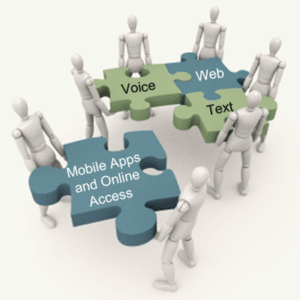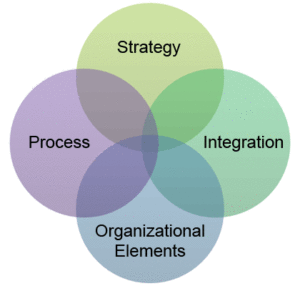Omnichannel is everywhere – vendor marketing, analyst articles, conference sessions, client wish lists. While touted as a new concept, it doesn’t seem all that different from the multimedia routing and reporting (MMRR) that have been around for years and have been so difficult to achieve. So it’s fair to ask: What’s really new?
 Omnichannel seeks to achieve a “seamless, integrated customer experience,” not just offer a bunch of channels. It contemplates cross-channel interaction with ease of movement from one to another – e.g., mobile app to phone call, web self-service to phone call (“call me”) or chat session, self-service kiosks to video assisted service on the kiosk from a branch or retail store.
Omnichannel seeks to achieve a “seamless, integrated customer experience,” not just offer a bunch of channels. It contemplates cross-channel interaction with ease of movement from one to another – e.g., mobile app to phone call, web self-service to phone call (“call me”) or chat session, self-service kiosks to video assisted service on the kiosk from a branch or retail store.
A seamless customer experience impacts processes and tools, including the ability to track each customer’s progress through identification and authentication, transactions attempted, web pages visited, and other channels used prior to selecting an assisted service channel. It means that the staff offering assisted service must have visibility into the progress of the current contact as well as the customer’s account and contact history. Suffice it to say, integration of data and tools is a critical success factor to achieving an omnichannel goal.
Traditional ACD and CRM vendors have been stepping up their games to live into the omnichannel vision. They’re adding customer interaction channels (e.g., text/SMS) and extending their core tools to all media. The challenge is that CRM functionality overlaps the traditional multimedia ACD and can drive confusion about what to do where. The waters are further muddied by virtue of the fact that these channels are still owned in siloed departments. Emerging Customer Engagement Hub (CEH) vendors and cloud solution providers stand ready to alleviate the confusion – a market development that has forced traditional vendors to respond.
 Even with the optimal technology, enterprises will not achieve an omnichannel customer experience with tools alone. Strategy comes first, followed by the process, integration, and organizational elements to drive value from the technology and deliver on the goals. Four sets of actions create momentum for future success.
Even with the optimal technology, enterprises will not achieve an omnichannel customer experience with tools alone. Strategy comes first, followed by the process, integration, and organizational elements to drive value from the technology and deliver on the goals. Four sets of actions create momentum for future success.
Create an enterprise, cross functional team that includes the contact center, IT, Marketing, other channel owners, etc. – anyone that touches the customer experience. The team will probably require high level sponsorship to get started. The team should define the end-state goal and ensure buy-in at all levels of the organization and within all silos. Define the customer experience today and gaps in achieving the omnichannel vision. Define the projects that it will take to achieve the vision and gain approval for all aspects of achieving the vision, including funding and resources.
Document the system integration strategy. The most important and most challenging aspect of creating an omnichannel customer experience involves the use of data. The strategy should include:
- Channel selection – allow customers to select contact media appropriate to their channel of choice and pass data along with contacts in all media – even as they cross channels.
- ID&V – adjust the ID&V process based on channel and transaction risk; leverage and pass data
- Routing – implement conditional and data directed routing based on data passed with contact and customer profile and interaction history
- Contact handling – guide the interaction with business rules and workflows based on data passed with contact and customer history; create a custom experience
- Follow/up and escalation – use business rules and workflows that leverage data to guide and track the next task
Treat MMRR, CRM, knowledge management (KM), and analytics as key enablers for omnichannel that must be integrated. While MMRR and CRM address the customer interation, a single KM provides the source of answers used across all channels, whether self-service or assisted service. Analytics assesses each channel’s performance and the customer experience across channels, and identifies actions from insights. Ensure that the integration and data strategy achieves the reporting required to track the customer experience and the efficiency of operations.
Define metrics for non-voice media and how that data will be captured for staff planning and decision making. Ensure recruiting, hiring and training covers all the skills required to handle all media. Close the loop with quality reviews, voice of the customer, and feedback and coaching across media.
